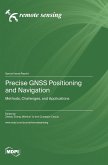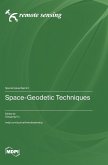The potential of global navigation satellite systems (GNSSs) as an efficient tool in providing precise positioning has been widely recognized. In particular, the precise point positioning (PPP) technique is receiving increasing interest due to its cost-effectiveness, global coverage, and high accuracy. In addition, the emergence of multiple satellite navigation systems, including BDS, Galileo, modernized GPS, and GLONASS, brings great opportunities and challenges for PPP. For instance, the additional frequency as well as the new signal of BDS-3 and Galileo enables the fast convergence of PPP by efficient ambiguity resolution (AR). More recently, besides the standard point positioning, BDS, Galileo, as well as QZSS have also provided the satellite-based PPP service. Obviously, the development of multi-frequency multi-GNSS and their built-in PPP service has popularized the use of PPP as an efficiency technique in navigation, timing, as well as geoscience applications.
Hinweis: Dieser Artikel kann nur an eine deutsche Lieferadresse ausgeliefert werden.
Hinweis: Dieser Artikel kann nur an eine deutsche Lieferadresse ausgeliefert werden.








